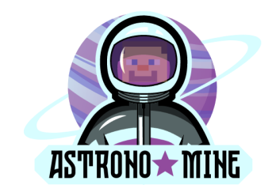A place for space: The shift to online space education during a global pandemic
Online learning has been a mainstay of modern education for decades (Harasim, 2000). Schools and universities have been advised to provide more online education opportunities for their students to engage in real-time, synchronous learning, as well as offline, asynchronous learning, since long before the onset of the pandemic (Nieuwoudt, 2020). The arrival of the pandemic, however, heralded a new era in online science engagement. This was especially apparent in the field of space education, which has grown dramatically in recent years through the spread of pan-European projects engaging young people. The pandemic resulted in a dramatic shift in how these kinds of projects can be implemented, with almost all activities taking place virtually rather than in more traditional forms of public engagement. Given this shift towards online engagement, the field of space education is at a critical phase of development. It is clear that both formal and informal education can play important roles in how young people engage with space science and astronomy (Anjos and Carvalho, 2020). The blurring of the boundaries between formal and informal education, caused by the pandemic, presents the field of space education with an opportunity to consider its future development. With the growth in projects, initiatives, and funding, space education might have reached a critical mass where it can now be recognised as its own distinct discipline—a field of research as well as practice. This would bring the benefit of being able to tackle specific challenges faced by the field, such as removing the “intangible barriers that stand in the way of inclusion” (Russo et al., 2019, p. 19). Alternatively, retaining its ability to transcend disciplinary boundaries could see the field of space education offer more potential accessibility for public engagement with science, which might be critical in helping to foster societal trust in science through a continuing public health crisis. Either way, the future of space education in a post-pandemic landscape is likely to be intertwined with developments in the field of online engagement.
An instructive analogue for space education, and how it might adapt to a post-pandemic environment, is the development of the field of citizen science. Citizen science has existed in some form or other as long as space education (Roche et al., 2021b) and its transdisciplinary nature has caused wide-ranging challenges for its integration into formal education (Roche et al., 2020). The tipping point for the evolution of modern citizen science was its early adoption of online engagement, which transformed it from a niche field of research and practice to a global phenomenon engaging millions (Bonney, 2014). In the case of the spaceEU project, shifting to an online setting meant it became easier to identify and involve space professionals around the world. With appropriate planning and consideration of time zones, event organisers were not limited to local or national expertise. The reduction in travel requirements allowed the project team to shift the focus of some events to more underserved communities and to include more languages. As is the case with citizen science, language accessibility is vital in any large-scale online science engagement as the terminology will be greatly affected by cultural contexts (Eitzel et al., 2017).
While online engagement can help students feel that there is some normality in their learning experience—invaluable to those struggling with mental health issues exacerbated by the pandemic—it can also cause problems for students who may not have easy access to reliable broadband infrastructure, or even consistent access to a computer. As has long been the case with online engagement—students with the greatest learning needs are likely to be the ones who face the biggest challenges in gaining equal access (Barraket and Scott, 2001). For space education to fulfil its potential to strengthen the relationship between science and society, it will have to overcome the digital divide and ensure a socially inclusive field of online engagement (Ramsetty and Adams, 2020). The space education community, like every public engagement field that was transported online in a public health crisis, faces new responsibilities in how to communicate science in uncertain times. The first challenge is how to provide better, more equitable, learning access and support for those who need it most (Retrê et al., 2019).
This is a part of the original perspective article posted in Frontiers on 21 July 2021.
Authors: Joseph Roche, Laura Bell, Mairéad Hurley, Grace D’Arcy, Brendan Owens, Aaron M Jensen, Eric A. Jensen, Jorge R. Gonzalez, Pedro Russo
Link: https://www.frontiersin.org/articles/10.3389/fenvs.2021.662947/full
Authors: Joseph Roche, Laura Bell, Mairéad Hurley, Grace D’Arcy, Brendan Owens, Aaron M Jensen, Eric A. Jensen, Jorge R. Gonzalez, Pedro Russo
Link: https://www.frontiersin.org/articles/10.3389/fenvs.2021.662947/full
